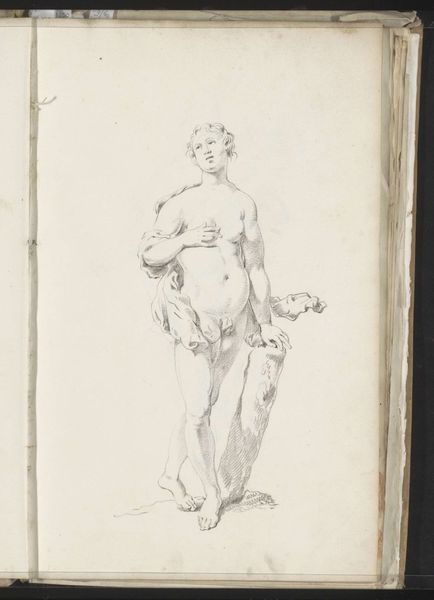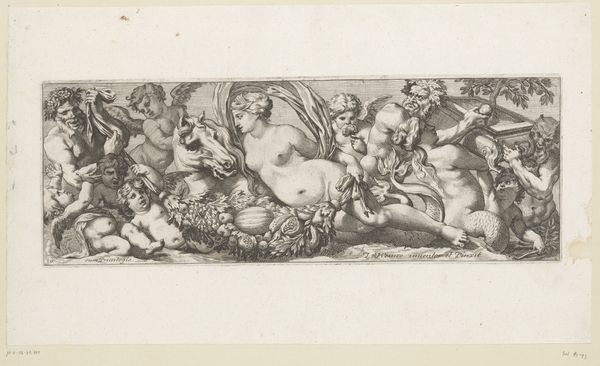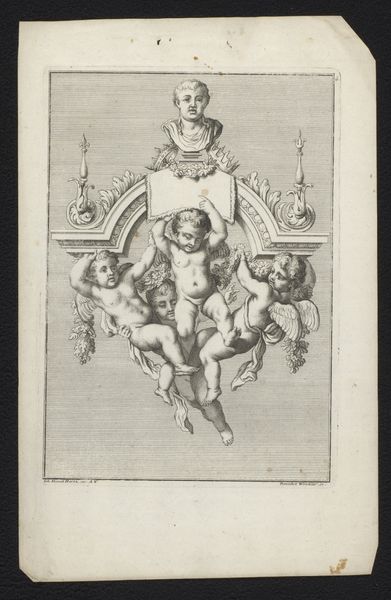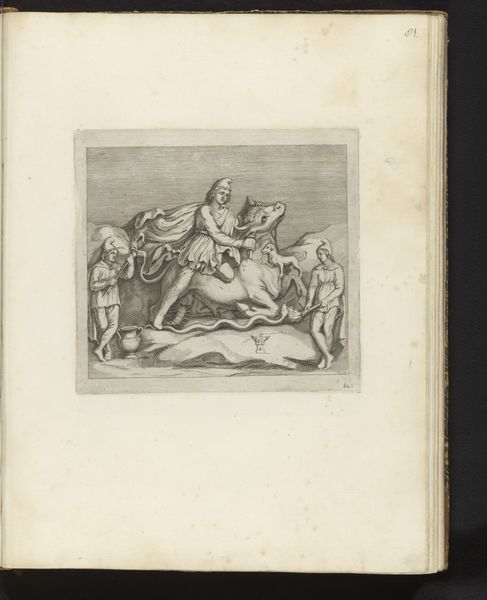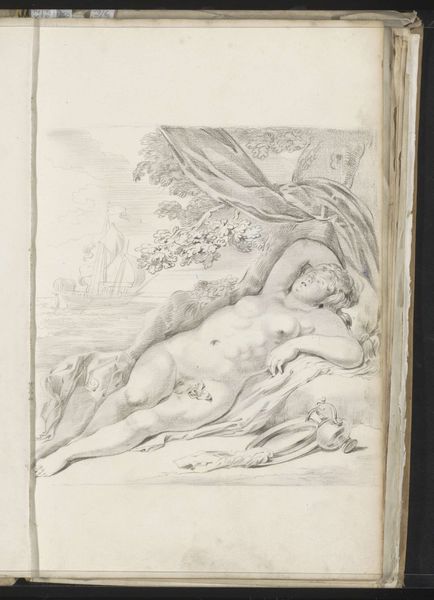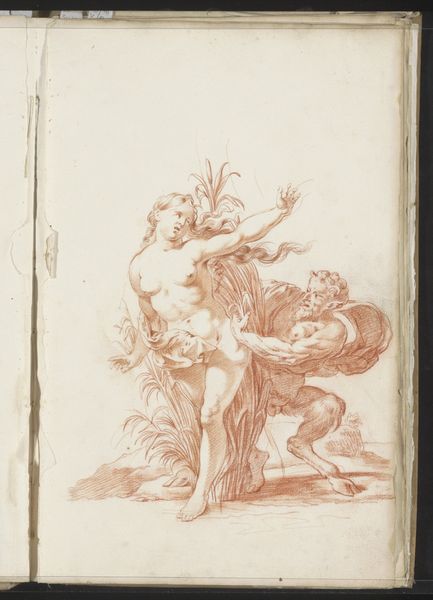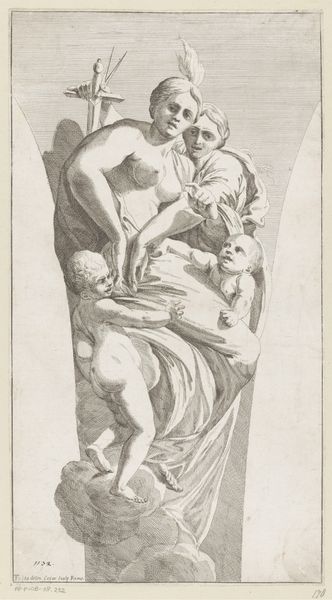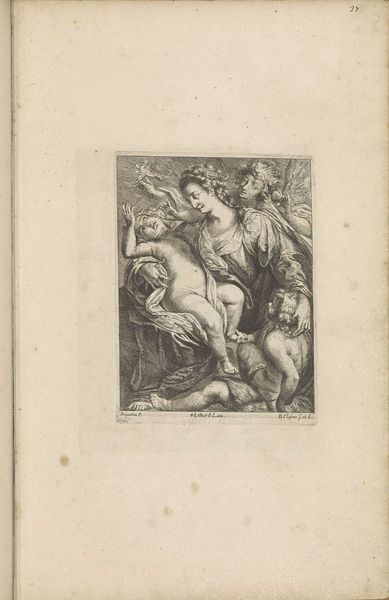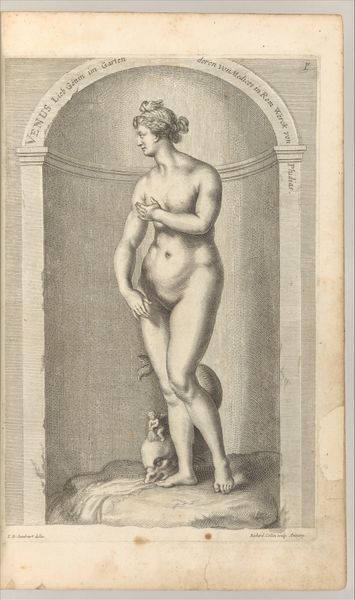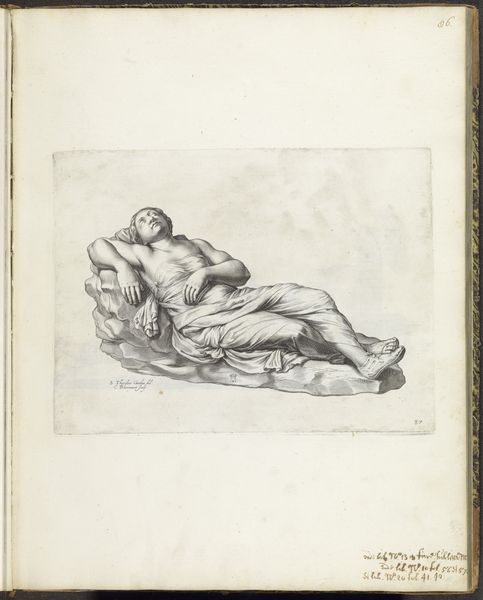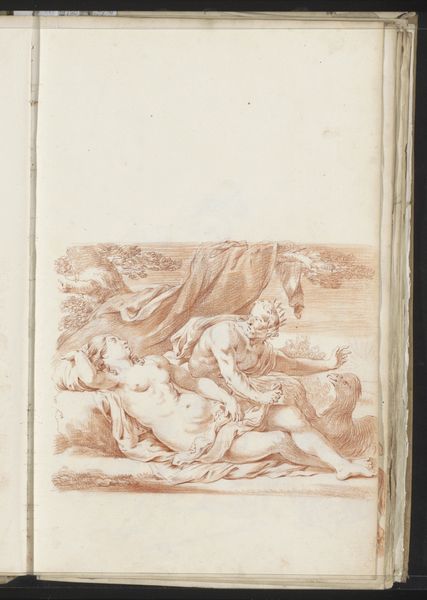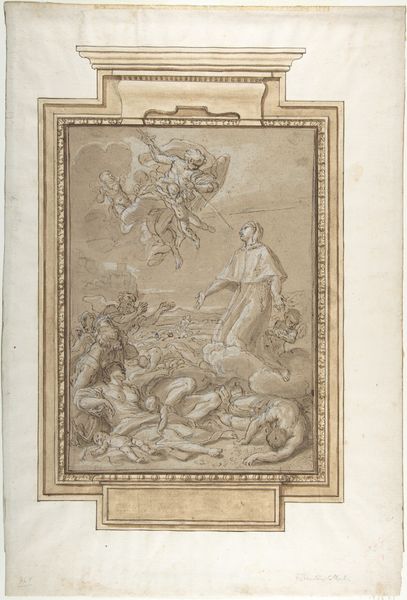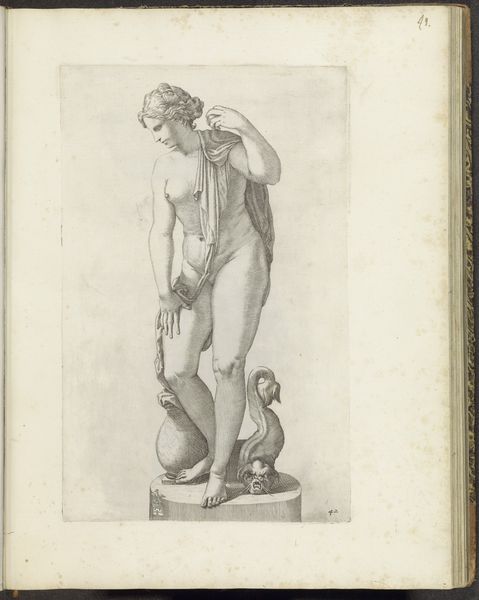
drawing, paper, engraving
#
drawing
#
baroque
#
pencil sketch
#
figuration
#
paper
#
pen-ink sketch
#
history-painting
#
academic-art
#
engraving
Dimensions: height 228 mm, width 310 mm
Copyright: Rijks Museum: Open Domain
Curator: Here we have "Riviergod van de Nijl," or "River God of the Nile," created sometime between 1636 and 1647. Cornelis Bloemaert rendered this work, a drawing using pencil, ink and paper. Editor: It strikes me as surprisingly serene. This river god seems so calm and the children playing around him project an atmosphere of untroubled prosperity. The precision of line speaks to an engraving aesthetic. Curator: Indeed, that calmness is something Bloemaert achieves effectively. The engraving medium itself carries connotations. Engravings like these were critical for disseminating imagery across Europe, embedding specific symbolic interpretations within broader culture. Editor: The visual language, it's all about fertility and abundance. A robust, bearded figure represents the life-giving Nile, while children, brimming with playful energy, surround him as symbols of future potential. A very powerful image that would circulate. Curator: Precisely. And consider the socio-political undercurrent. Representations of river gods, and particularly the Nile, often served to project power and control over resources, a vital message in the political discourse of the time. This work would circulate among elite, literate circles, reflecting not simply a visual representation but an assertion of authority. Editor: Looking at the laurel wreath, one cannot escape a subtle suggestion of triumph or divinity, further enhanced by his repose which lends him dignity. I can see why a literate public would appreciate this. It speaks on many registers to power. Curator: Yes, Bloemaert really encapsulates that. In viewing this engraving, one must not only see it as a depiction, but consider how it played its part in the ongoing narrative of power and the flow of imagery as a method of imbuing meaning and status to culture in that era. Editor: Definitely. This small engraving holds layers within layers of social significance expressed through visual emblems and aesthetic values from its time. A tiny image but mighty powerful.
Comments
No comments
Be the first to comment and join the conversation on the ultimate creative platform.
